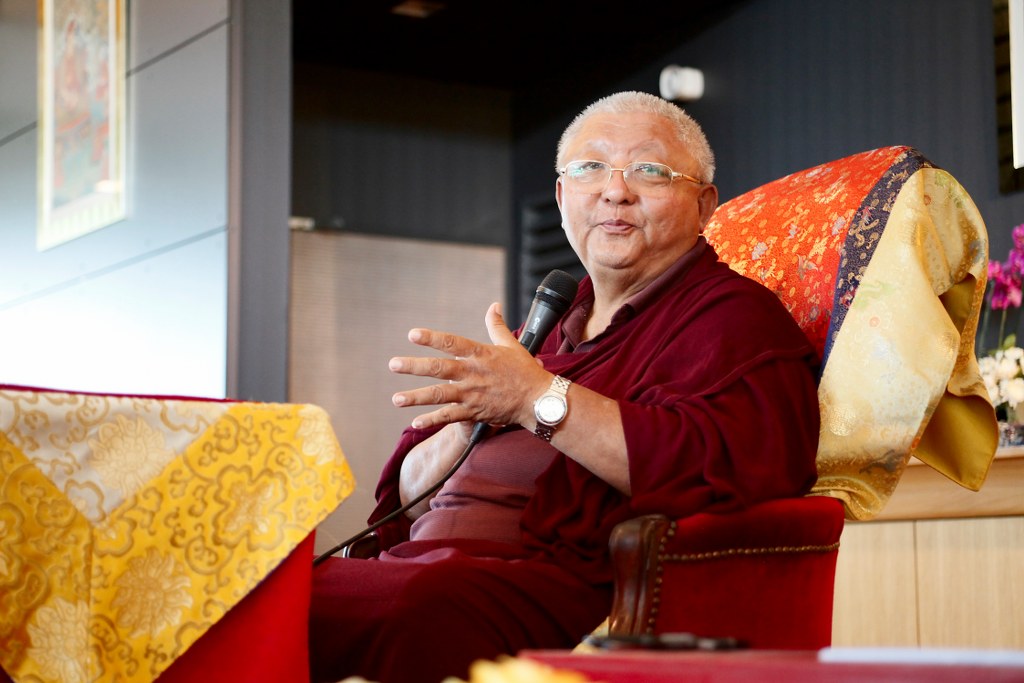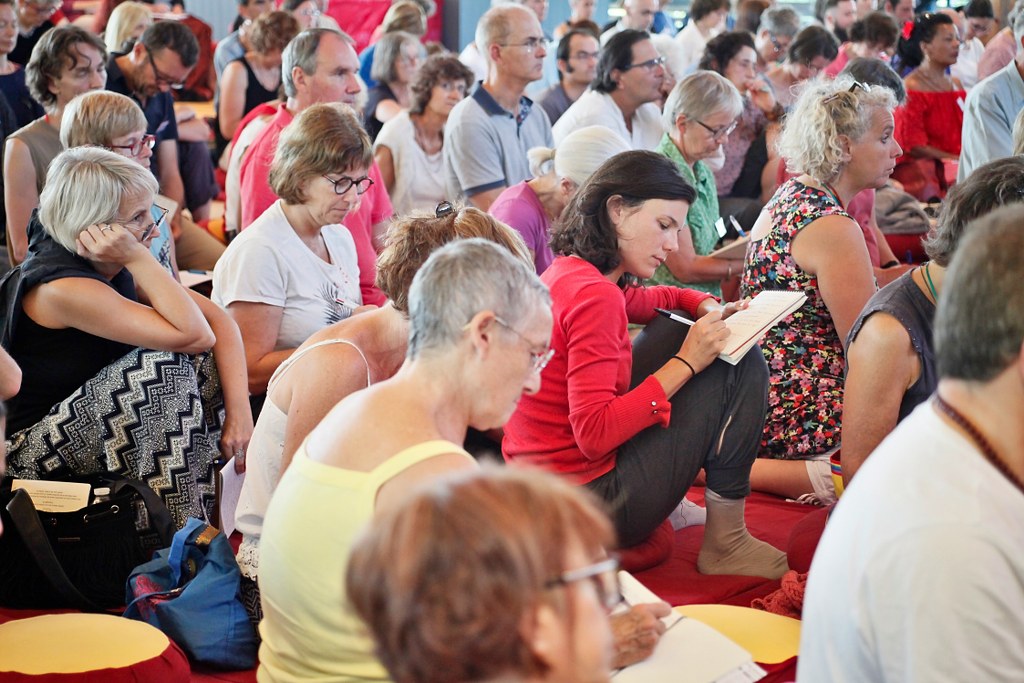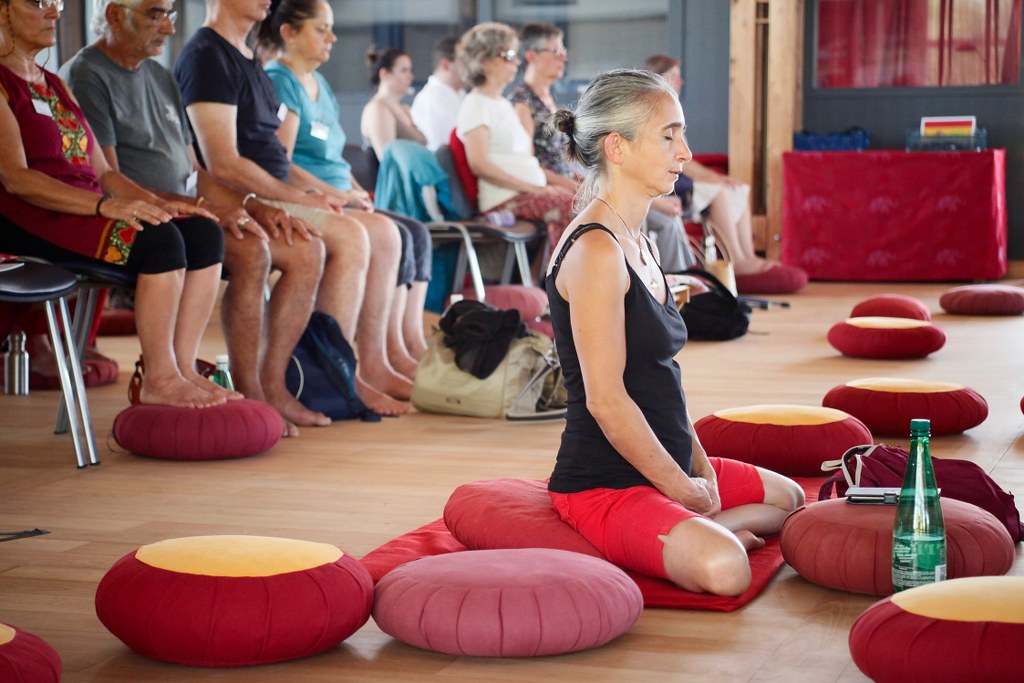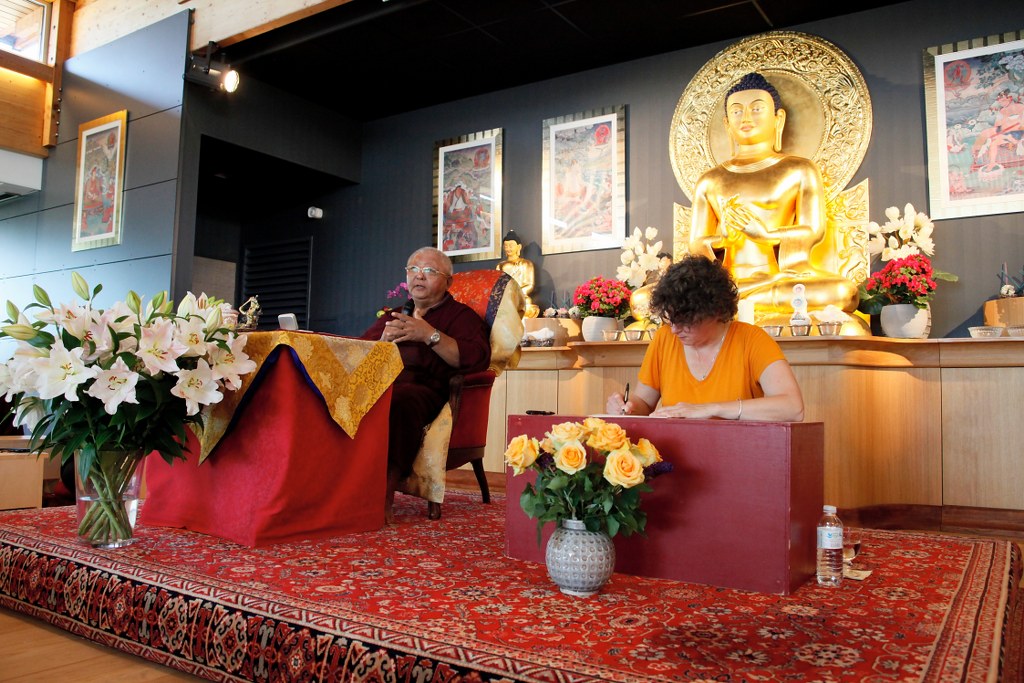Sit down and practice with sincerity – Teaching with Jigmé Rinpoché
In Tibetan, we don’t say “I’m a Buddhist”, we say “I turn inwards”. This is the idea that began the five days of teaching with Jigmé Rinpoché. To know the outer world is not a bad thing, but to turn inwards allows us to not have to depend on our environment. By looking inward, we can realize that there is something to observe: the state of our mind. It is by becoming aware of its multiple aspects that we can cultivate clarity; we understand how our manner of linking to the outer world creates problems. This understanding allows us to depend less on the conditions that we encounter.
Then, as is often the case during his teachings, Rinpoché made sure that he gave us some keys, the means that will allow us to integrate the instructions with proper understanding. The first stage consists of slowing down: “it is about knowing rather than doing.” The point is to not act too quickly beginning with what we have heard from the teachings, but to take the time to acquire an understanding. It is a process of integration that allows us to put the teaching to work in a correct way.
To return to the fundamentals: the nature of human beings has the capacity to actualize everything, to accomplish everything. It cannot do it directly due to its limiting conditions. Here, Rinpoché insists: “I’m not talking about negative conditions, but limiting!” He goes back to this idea in other ways throughout the teaching: “I don’t say what to do and what not to do, I make an assessment, I’m talking about conditions to gather; then it is up to you to see how to put this to work” or rather “I’m not giving you a direction to take, but the elements to be able to evaluate the situation in order to face the problems.” And lastly, (with a few quirky but ever so expressive metaphors) “our situation is not black and white, not so distinct, that approach leads to more confusion; so we investigate, a little like if we asked why does hair grow.” The real question is in fact: “why does suffering exist? Where does it come from, how does it take hold, and how to respond to it?” All of that had the aroma of the four truths of the Noble Ones.
Our human nature is therefore hampered, not by the negative, but through its limits. Three obscurations are interrelated in their workings, hindering our natural clarity:
- the obscuration of knowledge: the identification of everything that we have learned since our birth and that we take for real. This is not to say that knowledge is not useful, quite the contrary, but it is our manner of crystallization it that creates the obstacle.
- the obscuration of tendencies: the habits cultivated for such a long time, linked to the fact that we are humans and that seem so solid. They are the cause of many of our behaviours.
- the obscuration of afflictive emotions: the emotional process based on subtle attachment that leads a range of different energies such as desire, aversion, jealousy, pride and ignorance. Whatever we do, we perceive things through this prism.
Once the assessment is complete, Rinpoché gave the elements that allow us to cultivate our inner ressources. The starting point is a relaxed state that ensues from an understanding of how we function. To maintain the relaxed state allows the mind to calm down a little, which until that point never stops. It is first about reducing the mental speed to begin to encounter our different obscurations that are always at work. By associating meditation, that will allow the mind to be clarified, meaning that it understands the conditions that surround us without being blocked by them. We understand how the problems we encounter are linked to one or another of the obscurations. By practicing seeing them in a repeated manner, we realize that the problems are not really problems. This relaxed consciousness is a source of stability. It is the basis for continuing on the path.
So roughly, that key ideas of the first day. In addition to guided meditations that punctuated the day, a revision of the morning’s teaching lead by lama Jean-Guy allowed a space for the possible questions and the need for clarification. The questions were relayed to Rinpoché. This is how the following days became times of questions and answers. As a result, multiple facets of the Dharma were cleared up:
- How to reflect on a teaching and notably deepen the meaning of impermanence.
- How to understand the accumulation of negative (or impeding) actions.
- How to recite wishing prayers and their frequency as well as the meaning of the blessing.
- The evolution of meditation in order to get to a deeper meditation without going astray.
- The karma, the veil of knowledge, listening and reflection.
This collection gave a view of the whole path. Moreover, Rinpoché concluded by saying: “Thank you for your numerous and good questions. This way, I could explain the essential points that support a practice and not the technical aspects. Also, whatever your meditation, you can keep what was said in mind in order to obtain the fruit. According to your perception, you can rely on what was said and develop clarity.”
Among all the advice given during these days, here is a bit that can remain in your heart: “Don’t rush, remain relaxed, down to earth. The past masters gave the same advice: sit-down, relax, and be precise. Remain comfortable, do not seize one aspect over another. It is not easy, because there are tendencies, the rush, our habit of fixing things; this creates a lot of fatigue, stress, and sometimes discouragement. So exactly: sit down, and practice with sincerity.
Puntso, Program director for Dhagpo




